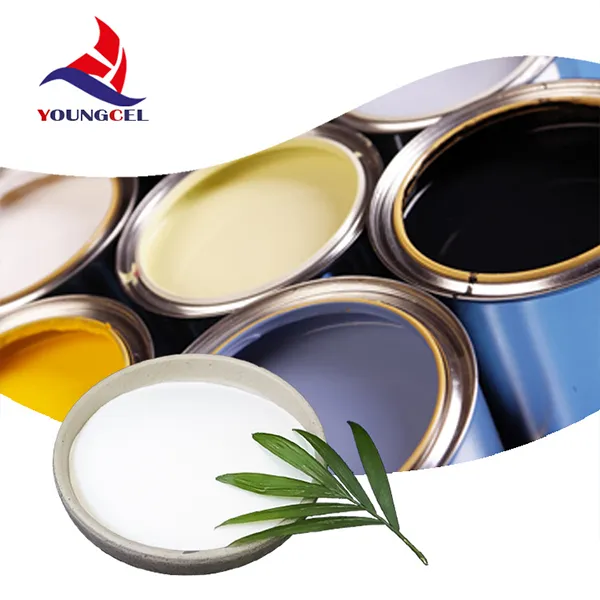The Versatility of HPMC (Hydroxypropyl Methylcellulose) in Modern Applications
Hydroxypropyl Methylcellulose (HPMC) is a versatile cellulose ether widely used in various industrial applications, including construction, pharmaceuticals, food production, and personal care products. This article delves into the properties, production, and diverse applications of HPMC, highlighting its significance in modern technology.
Properties of HPMC
HPMC is derived from cellulose, a natural polymer found in the cell walls of plants. Through chemical modification, hydroxyl and methoxy groups are introduced, which enhance its solubility and adhesion properties. HPMC is characterized by its ability to form a gel in aqueous solutions, making it an excellent thickening agent. Additionally, it is non-toxic, biocompatible, and holds a neutral pH, which are essential attributes for pharmaceutical and food applications.
One of the notable features of HPMC is its thermoplasticity, which allows it to undergo molding and shaping while retaining its structural integrity upon cooling. This property is particularly useful in the production of various molded components in construction materials and consumer products. Furthermore, HPMC exhibits excellent film-forming abilities that confer water-retention characteristics and resistance to oil and grease, enhancing product shelf life and performance.
Production Process
The production of HPMC involves the alkaline treatment of cellulose derived from wood pulp or cotton. The cellulose is etherified through a reaction with propylene oxide and methyl chloride. This process allows for the controlled adjustment of viscosity and other properties of HPMC, catering to specific needs across different industries. The resulting product can vary in viscosity, molecular weight, and substitution levels, enabling tailored applications to suit diverse chemical and physical environments.
Applications in Various Industries
hpmc methyl cellulos

1. Construction In the construction industry, HPMC is commonly used as an additive for cement and mortar. Its water-retention properties allow for extended workability time, ensuring optimal adhesion and bonding. Moreover, HPMC enhances the durability and flexibility of finished products, making it invaluable in tile adhesives, sealants, and plasters.
2. Pharmaceuticals HPMC finds widespread use in the pharmaceutical sector as a binder and controlled-release agent in tablets and capsules. Its non-toxic nature and excellent film-forming properties facilitate the production of sustained-release formulations. HPMC also serves as a stabilizer in suspensions and emulsions, enhancing drug delivery efficiency and patient compliance.
3. Food Industry In food products, HPMC acts as a thickening agent and emulsifier, improving texture, stability, and moisture retention. It is commonly found in vegetarian capsules as a substitute for gelatin, catering to a growing demand for plant-based solutions. HPMC's ability to form gels can also be utilized in sauces, dressings, and desserts, adding viscosity without compromising taste or quality.
4. Personal Care The cosmetic and personal care sector leverages HPMC in products such as lotions, creams, and shampoos. Its thickening and emulsifying properties contribute to the stability and aesthetic appeal of cosmetic formulations. HPMC is also utilized in hair gels and styling products due to its excellent film-forming characteristics, providing hold and shine without leaving a sticky residue.
5. Agriculture Recently, HPMC has started to gain traction in agricultural applications as well. It can be used as a coating agent for fertilizers, ensuring a controlled release of nutrients. This contributes to improved agricultural efficiency and environmental sustainability by reducing runoff and nutrient loss.
Conclusion
Hydroxypropyl Methylcellulose exemplifies the intersection of natural materials and modern technology, showcasing its adaptability across numerous industries. Its unique properties, ranging from thickening and emulsifying to film-forming and water retention, make it an indispensable ingredient in many applications. As industries strive for sustainability and efficiency, HPMC stands out as a leading solution, proving that a single compound can profoundly impact various sectors. Its ongoing research and development will certainly unveil even more possibilities in the near future, solidifying HPMC's place in innovative applications.
-
The Versatility of Industrial Additives: Mhec, Hpmc, And Wall Putty SolutionsNewsMar.28,2025
-
The Importance of HPMC in Modern IndustriesNewsMar.28,2025
-
Partnering with Reliable Manufacturers for Optimal ResultsNewsMar.28,2025
-
Enhancing Construction Performance with Redispersible Polymer PowdersNewsMar.28,2025
-
Enhancing Construction and Household Products with Advanced AdditivesNewsMar.28,2025
-
Building Strong Foundations with Key Construction MaterialsNewsMar.28,2025






